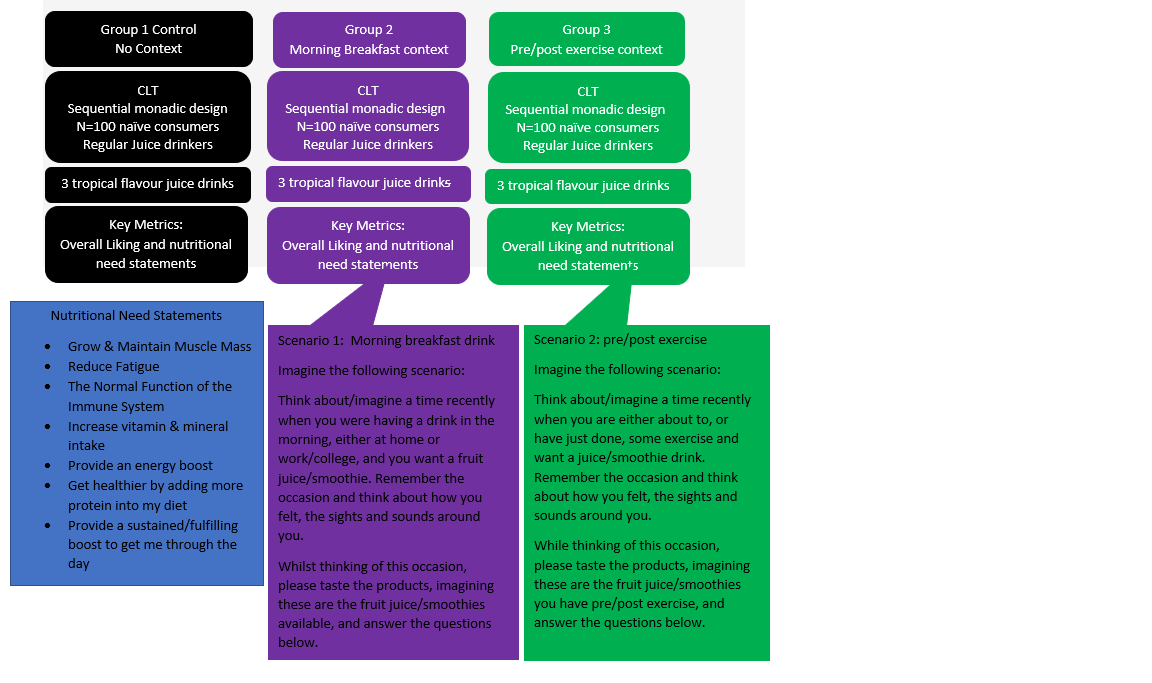Abstract
Introduction
The consumption context has been shown to influence consumer liking, perception and choice of product, therefore understanding and accounting for context influences is key. Whilst many consumer tests are conducted in a controlled environment, e.g. central location test (CLT), this may not accurately represent the true ‘real life’ context that products are naturally consumed in and may influence consumer perception. Published studies suggest the addition of a written scenario to a CLT may be an effective method to evoke memory of appropriate consumption context, increasing ecological validity.
This study aimed to assess the use and influence of written contexts, investigating areas of greatest influence; hedonic or functional product aspects?
Methods
Fig 1: Test design, products, key metrics and written scenarios
Results
Each scenario resulted in the same hedonic product order; two products performed at parity whilst the other was liked significantly more.
The most liked product demonstrated differences in hedonic scores due to context, performing significantly better in the exercise context than breakfast.
Different scenarios led consumers to view products as providing different functional needs. The most liked product tended to score higher overall on functional needs with the link to increasing vitamin intake and adding protein differing significantly across the scenarios.
Conclusions
Providing a written scenario did not change the hedonic rank order or provide greater discrimination between products. Evoking context did impact hedonic scores for the most liked product, although, this aspect wasn’t consistent across products and therefore justifies further investigation.
Context modified consumer perception of functional needs to varying degrees, suggesting when products are linked to nutritional and/or functional elements, consumers may adjust judgements based on contextual cues.
Concept/packaging provide additional layers of information warranting expansion of these studies, comparing blind vs concept led presentation, to explore if such influences remain.
